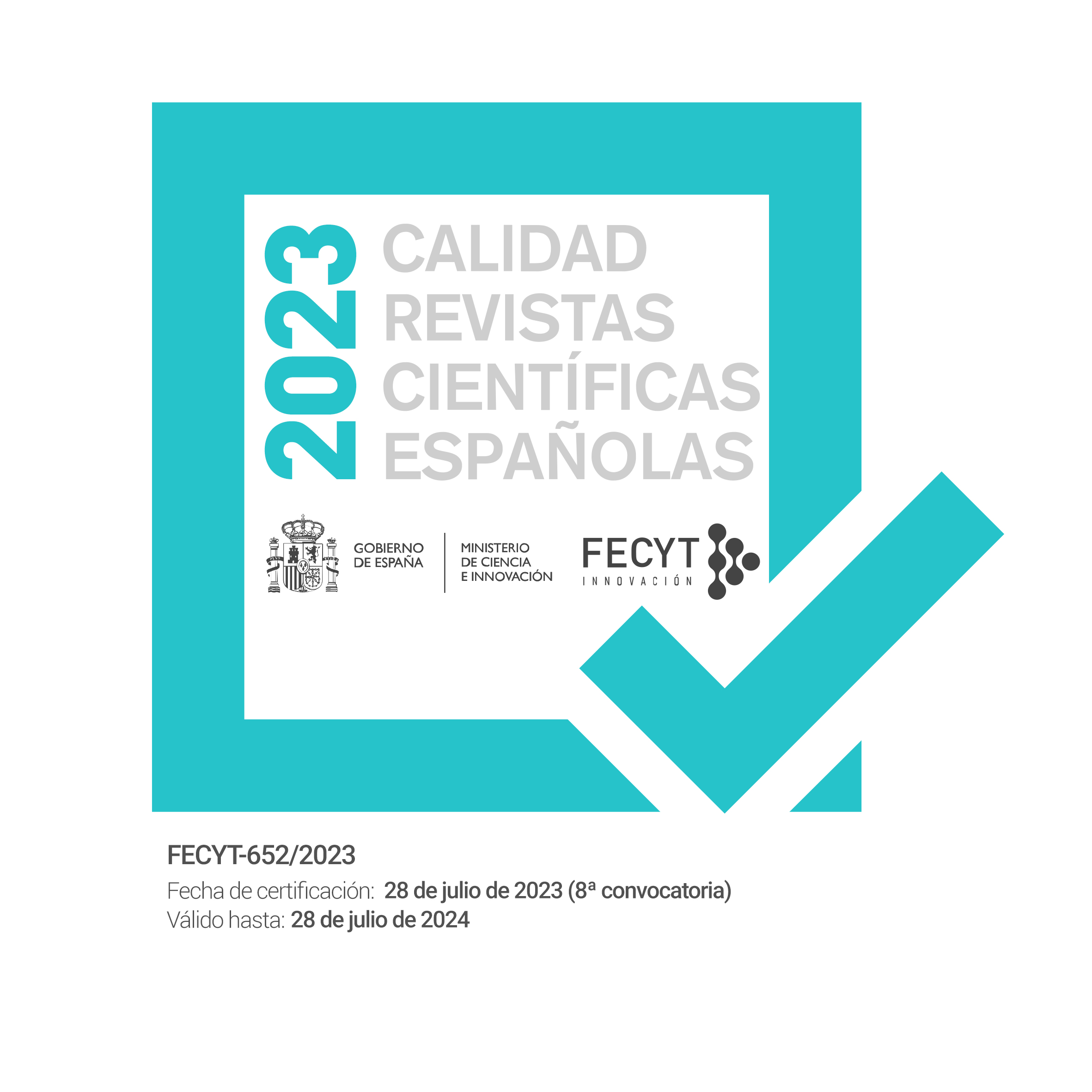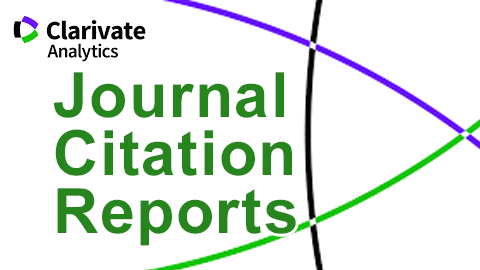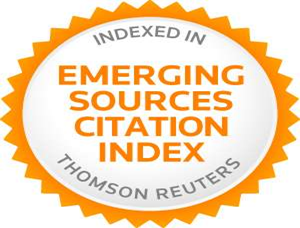Corpora and new technologies in the linguistics classroom: a pedagogical use of a clause pattern database
Resumen
Abstract
Several corpus-based studies have suggested that the observation of real instances of language production is a valuable methodological approach in the description of language. In this respect, the use of computer technology tools has recently become commonplace in the teaching and learning of second and foreign languages. This paper presents the pedagogical use of a clause pattern database which has been designed as a resource to create corpus-based teaching materials to be applied in the linguistics classroom. More specifically, the Clause Pattern Database (CPDB) provides a wide representative sample of clause patterns in context. The task derived from it and described in this paper illustrates the effectiveness of the CPDB as a methodological tool that contributes not only to improving students’ understanding of the mechanisms of English syntax but also to integrating new information and communication technologies (NICTs) in the linguistics classroom.
Keywords: corpus linguistics; lexico-grammatical study; clause pattern database; linguistics classroom; NICTs
Resumen
Varios estudios basados en corpus textuales han subrayado la relevancia de la observación de ejemplos de producción lingüística real como herramienta metodológica al servicio de la descripción lingüística. En este sentido, en el campo de la enseñanza y aprendizaje de SL y LE el uso de herramientas computacionales ha aumentado recientemente. Este artículo presenta el uso pedagógico de una base de datos de patrones léxico-sintácticos, la Clause Pattern Database (CPDB), diseñada como recurso para la creación de materiales didácticos, basados en corpus, para la enseñanza de la lingüística. La CPDB proporciona una muestra representativa de patrones léxico-sintácFticos que permite visualizar la complementación de un verbo léxico en un contexto real de aparición. La tarea que presentamos ha sido diseñada a partir de esta base de datos e ilustra la efectividad de la CPDB como herramienta metodológica que contribuye no sólo a mejorar la comprensión de los mecanismos que rigen la sintaxis inglesa, sino también a integrar nueva información y NTICs en el aula de lingüística.
Palabras clave: lingüística de corpus; estudio léxico-gramatical; base de datos de patrones léxico-sintácticos; aula de lingüística; NTICs
Citas
Aijmer, K. (Ed.). (2009). Corpora and Language Teaching. Amsterdam and Philadelphia: John Benjamins Publishing Company.
Altenberg, B. & Tapper, M. (1998). The use of adverbial connectors in advanced Swedish learners’ written English. In S. Granger (Ed.), Learner English on Computer (pp. 80-93). London and New York: Addison Wesley.
Baker, M. (1996). Corpus-based translation studies: The challenges that lie ahead. In H. Somers (Ed.), Terminology, LSP and Translation: Studies in Language Engineering, in Honour of Juan Sager (pp. 175-186). Amsterdam and Philadelphia: John Benjamins Publishing Company.
Baker, P. (Ed.). (2009). Contemporary Corpus Linguistics. London and New York: Continuum.
Bennet, G. R. (2010). Using CORPORA in the Language Learning Classroom: Corpus Linguistics for Teachers. Michigan: University of Michigan Press.
Bernardini, S. & Zanettin, F. (Eds.). (2000). Il Corpora della Didattica della Traduzione – Corpus Use and Learning to Translate. Bologna: CLUEB.
Bernardini, S. (2004). Corpora in the classroom. An overview and some reflections on future development. In J. M. Sinclair (Ed.), How to Use Corpora in Language Teaching (pp.15-38). Amsterdam: John Benjamins Publishing Company.
Biber, D., Conrad, S. & Reppen, R. (1998). Corpus Linguistics: Investigating Language Structure and Use. Cambridge: Cambridge University Press.
Biber, D., Johansson, S., Leech, G., Conrad, S. & Finegan, E. (1999). The Longman Grammar of Spoken and Written English. London: Longman.
Breyer, Y. (2009). Learning and teaching with corpora: Reflections by student teachers. Computer Assisted Language Learning, 22, 153-172.
Butler, C. (1985). Computers in Linguistics. Oxford: Basil Blackwell.
Campoy, M. C., Bellés-Fortuno, B. & Gea-Valor, M. L. (Eds.). (2010): Corpus-based Approaches to English Language Teaching. London: Continuum.
Carter, R. (1998). Orders of reality: CANCODE, communication, and culture. ELT Journal, 52, 43-56.
Charniak, E. & Johnson, M. (2005). Coarse-to-fine n-best parsing and MaxEnt discriminative reranking. Proceedings of the 43rd annual meeting of the association for computational linguistics (pp. 173-180). Michigan: Association for Computational Linguistics.
Comelles, E., Laso, N. J., Verdaguer, I. & Gimenez, E. (2010). Clause pattern DB: A corpus-based tool. In I. Moskowich-Spiegel Fandiño, B. Crespo García, I. Lareo Martín & P.Lojo Sandino (Eds.), Language Windowing through Corpora. Visualización del lenguaje a través de corpus (pp. 215-234). Coruña: Universidad da Coruña.
Comelles, E., Laso, N. J., Forcadell, M., Castaño, E., Feijóo, S. & Verdaguer, I. (2012). Using online databases in the linguistics classroom: dealing with clause patterns. Computer Assisted Language Learning, 1-13.
Conrad, S. (2005). Corpus linguistics and L2 teaching. In E. Hinkel (Ed.), Handbook of Research in Second Language Teaching and Learning (pp. 393-409). Lawrence Erlbaum Associates: New York.
Cortes, V. (2006). Teaching lexical bundles in the disciplines: An example from a writing intensive history class. Linguistics and Education, 17, 391-406.
Cowie, A. P. (1999). English Dictionaries for Foreign Learners. Oxford: Oxford University Press.
Csmoay, E. (2005). Linguistic variation within university classroom talk: A corpus-based perspective. Linguistics and Education, 15, 243-274.
Danielsson, P. (2003). Automatic extraction of meaningful units from corpora: A corpus-driven approach using the word stroke. International Journal of Corpus Linguistics, 8, 109-127.
Fanego, T. (2012). COLMOBAENG: A corpus of late modern British and American English prose. In N. Vázquez (Ed.), Creation and Use of Historical English Corpora in Spain, (pp. 101-117). Newcastle upon Tyne: Cambridge Scholars Publishing.
Fuster-Márquez, M. & Clavel-Arroitia, B. (2011). Implementing an academic corpus in the English language classroom in tertiary education. In Mª L. Carrió Pastor & M. A. Candel Mora (Eds.), Actas del 3 congreso internacional de lingüística de corpus, tecnologías de la información y las comunicaciones (pp. 695-704). Valencia: Universidad Politécnica de Valencia.
Gilquin, G., Granger, S. & Paquot, M. (2007). Learner corpora: The missing link in EAP pedagogy. Journal of English for Academic Purposes, 6, 319-335.
Gledhill, C. (2000). Collocations in Science Writing. Tübingen: Gunter Narr.
Granger, S. (1994). The learner corpus: A revolution in applied linguistics. English Today, 10, 25-33.
Granger, S. (1998). Prefabricated patterns in advanced EFL writing: Collocations and formulae. In A. P. Cowie (Ed.), Phraseology: Theory, Analysis and Applications (145-160). Oxford: Oxford University Press.
Granger, S. (2013). Learner English on Computer. New York: Routledge.
Granger, S. & Meunier, F. (Eds.). (2008). Phraseology in Foreign Language Learning and Teaching. Amsterdam and Philadelphia: John Benjamins Publishing Company.
Greaves, C. & Warren, M. (2007). Concgramming: A computer driven approach to learning the phraseology of English. ReCALL, 19 (3), 287-306.
Hanks, P. (2009). The impact of corpora on dictionaries. In P. Baker (Ed.), Contemporary Corpus Linguistics (pp. 214-236). London and New York: Continuum.
Huddleston, R. & Pullum, G. (2002). The Cambridge Grammar of the English Language. Cambridge: Cambridge University Press.
Laso, N. J. & Giménez, E. (2007). Bridging the gap between corpus research and language teaching. In C. Periñán (Ed.), Revisiting Language Learning Resources (pp. 49-64). Newcastle: Cambridge Scholars Publishing.
MacDonald, P., Murcia, S., Boquera, M., Botella, A., Cardona, L., García, R., Mediero, E., O’Donnell, M., Robles, A. & Stuart, K. (2011). Error coding in the TREACLE Project. In Mª. L. Carrió Pastor & M. A. Candel Mora (Eds.), Actas del 3 congreso internacional de lingüística de corpus, tecnologías de la información y las comunicaciones (pp. 725-740). Valencia: Universidad Politécnica de Valencia.
McEnery, T., Xiao, R. & Tono, Y. (2006). Corpus-based Language Studies. An Advanced Resource Book. London and New York: Routledge.
McEnery, T. & Hardie, A. (2012). Corpus Linguistics: Method, Theory and Practice. Cambridge: Cambridge University Press.
Meyer, C. F. (2002). English Corpus Linguistics: An Introduction. Cambridge: Cambridge University Press.
Moon, R. (2007). Sinclair, lexicography, and the Cobuild project. The application of theory. International Journal of Corpus Linguistics, 12(2), 159-181.
Mukherjee, J. (2004). Bridging the gap between applied corpus linguistics and the reality of English language teaching in Germany. In U. Connor, & T. Upton (Eds.), Applied Corpus Linguistics: A Multidimensional Perspective (pp. 239-250). Amsterdam and New York: Rodopi.
Nevalainen, T. & Ramoulin-Brunberg, H. (Eds.). (1996). Sociolinguistics and Language History. Studies based on the Corpus of Early English Correspondence. Amsterdam and Atlanta: Rodopi.
Oakes, M. (1998). Statistics for Corpus Linguistics. Edinburgh: Edinburgh University Press.
phpSyntaxTree. Retrieved from: http://www.ironcreek.net/phpsyntaxtree/ (last visited: 06 April 2016).
Reppen, R. (2009). English language teaching and corpus linguistics: Lessons from the American national corpus. In P. Baker (Ed.), Contemporary Corpus Linguistics (pp. 204-213). London and New York: Continuum.
Rissanen, M. (2000). The world of English historical corpora: from Caedmon to the computer age. Journal of English Linguistics, 28(1), 7-20.
Seidlhofer, B. (2002). Pedagogy and local learner corpora: Working with learning-driven data. In S. Granger, J. Hung & S. Petch-Tyson (Eds.), Computer Learner Corpora, Second Language Acquisition and Foreign Language Teaching (pp. 213-234). Amsterdam and Philadelphia: John Benjamins Publishing Company.
Sinclair, J. M. (2004a). Trust the Text: Language, Corpus and Discourse. London: Routledge.
Sinclair, J. M. (Ed.). (2004b). How to Use Corpora in Language Teaching. Amsterdam: John Benjamins Publishing Company.
Tono, Y. (2009). Integrating Learner Corpus Analysis into a Probabilistic Model of Second Language Acquisition. In P. Baker (Ed.), Contemporary Corpus Linguistics (pp. 184-203). London and New York: Continuum.
Tsui, A. B. M. (2004). What Teachers have always wanted to know - and how corpora can help. In J. M. Sinclair (Ed.), How to Use Corpora in Language Teaching (pp. 39-61). Amsterdam: John Benjamins Publishing Company.
Urzua, A. (2015). Corpora, context, and language teachers. In V. Cortes & E. Csomay (Eds.), Corpus-based Research in Applied Linguistics: Studies in Honor of Doug Biber (pp. 99-122). Amsterdam: John Benjamins Publishing Company.
Xiao, R. & Yue, M. (2009). Using corpora in translation studies: The state of the art. In P. Baker (Ed.), Contemporary Corpus Linguistics (pp. 237-261). London and New York: Continuum.
Descargas
Publicado
Número
Sección
Licencia
Reconocimiento – No comercial (CC BY-NC). Bajo esta licencia el usuario puede copiar, distribuir y exhibir públicamente la obra y puede crear obras derivadas siempre y cuando estas nuevas creaciones reconozcan la autoría de la obra original y no sean utilizadas de manera comercial.
Los autores retienen todos sus derechos de publicación y copyright sin restricciones.









